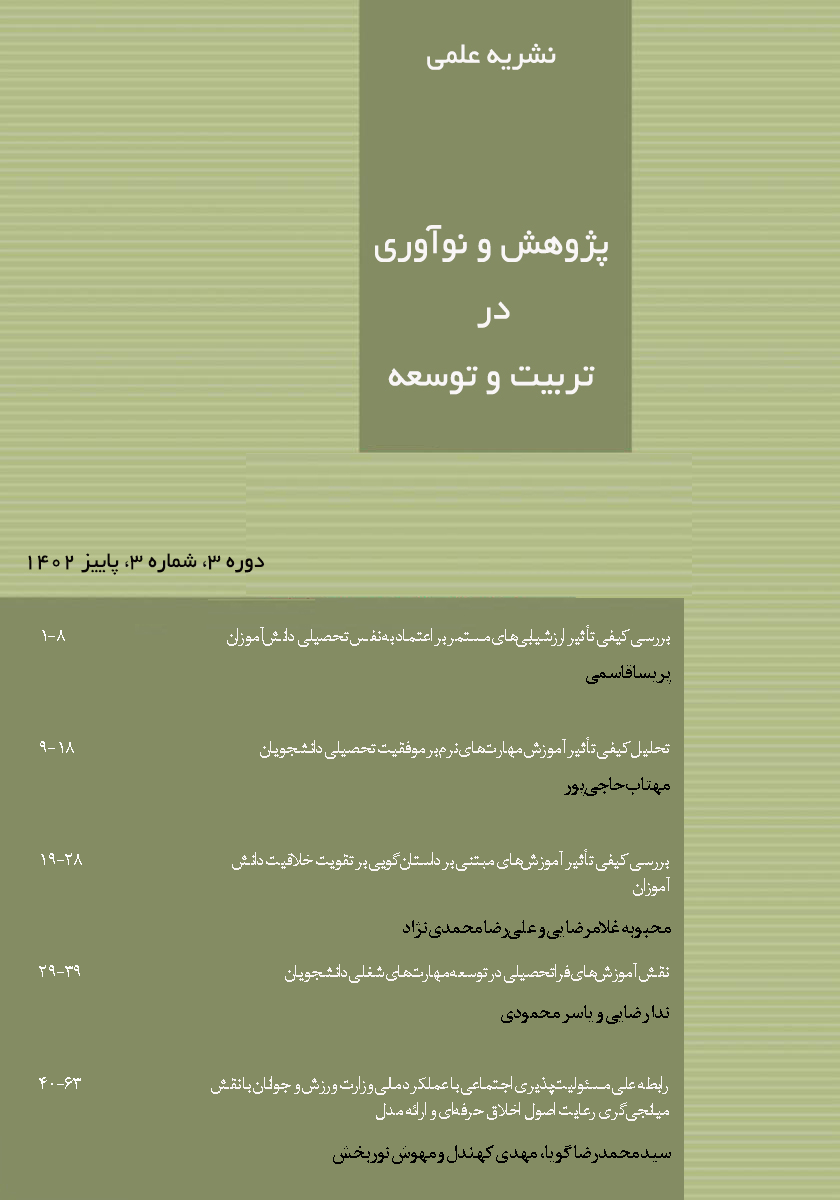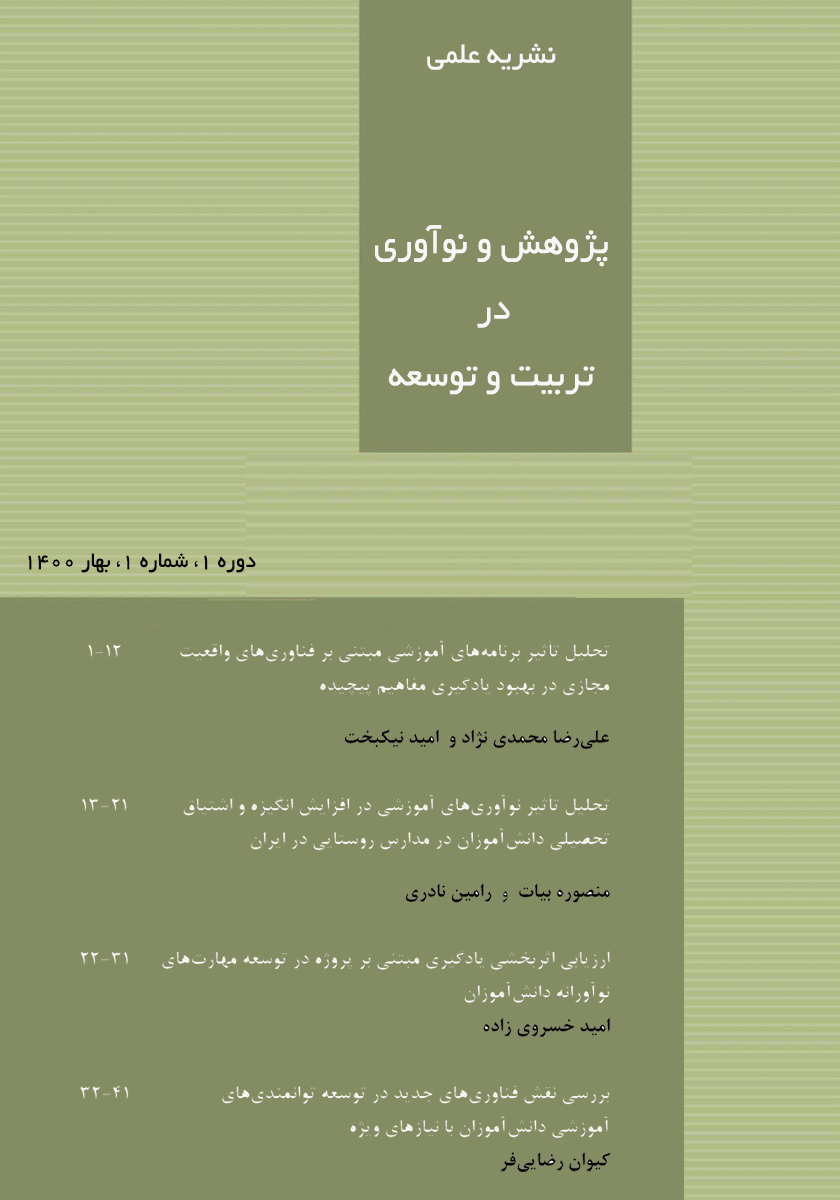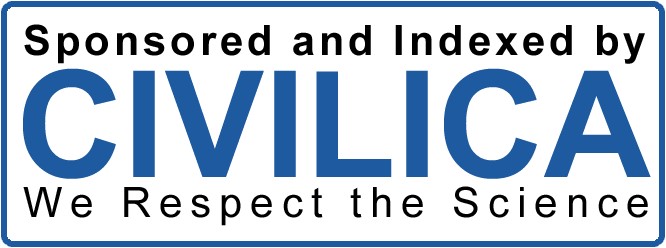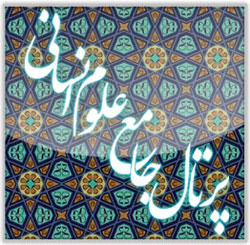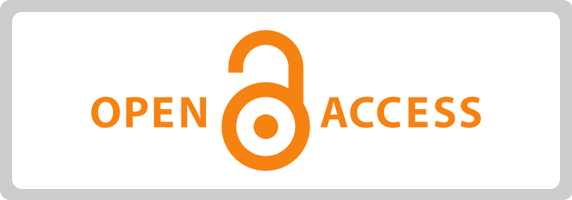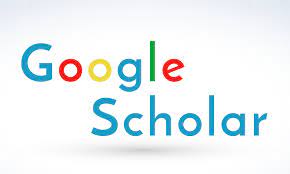A Qualitative Study on the Impact of Storytelling-Based Education on Enhancing Students' Creativity
Keywords:
Storytelling-based education, creativity, qualitative research, student development, cognitive skills, social skills, emotional growthAbstract
This study aimed to explore the qualitative effects of storytelling-based education on enhancing the creativity of students. The objective was to understand how this pedagogical approach influences various aspects of creativity, including imaginative thinking, critical thinking, social participation, and self-confidence among students. A qualitative research design was employed, utilizing semi-structured interviews to collect data. The study was conducted in Tehran with 21 student participants selected through purposive sampling until theoretical saturation was achieved. Data analysis was performed using content analysis, which involved open, axial, and selective coding to identify key themes and patterns related to the impact of storytelling-based education on creativity. The analysis revealed that storytelling-based education positively influenced students' creativity by enhancing their imaginative thinking, critical thinking, social skills, and self-confidence. Key axial codes included improved problem-solving abilities, increased class participation, and development of artistic creativity. Thematic analysis further categorized these impacts under broader themes, such as cognitive skills development, social skills enhancement, and emotional growth. The results aligned with previous studies indicating the effectiveness of storytelling as an educational tool in fostering creativity and related skills. The study concluded that storytelling-based education is a powerful method for fostering creativity in students. It not only enhances their cognitive and artistic abilities but also improves their social and emotional skills. The findings suggest that incorporating storytelling into educational curricula could significantly benefit student development. Future research is recommended to explore the long-term effects of this approach and its application across diverse educational contexts.
Downloads
References
Aboalshamat, K. (2023). Storytelling as innovative method to improve the
recognition of teledentistry among adults: a randomized controlled trial. International
Journal of Dentistry, 2023, 1-7. https://doi.org/10.1155/2023/8814905
Alves‐Oliveira, P., Gomes, S., Chandak, A., Arriaga, P., Hoffman, G., & Paiva, A.
(2020). Software architecture for yolo, a creativity-stimulating robot. SoftwareX, 11,
https://doi.org/10.1016/j.softx.2020.100461
Amnouychokanant, V. (2023). Knowledge management using storytelling with
infographics to develop creativity of undergraduate students. International Journal of
Learning Teaching and Educational Research, 22(10), 18-36.
https://doi.org/10.26803/ijlter.22.10.2
Anwar, R. (2023). Meaning of storytelling in volunteers' experiences at pabukon
ngadongeng community reading park. Jurnal Kajian Informasi & Perpustakaan, 11(2), 269.
https://doi.org/10.24198/jkip.v11i2.49905
Aydin, A. (2022). Theoretical knowledge difference between internet-based and
digital storytelling education about breast cancer. Medical Records, 4(3), 350-354.
https://doi.org/10.37990/medr.1102187
Baharuddin, N. (2023). The creative process: developing visual storytelling through
design thinking. International Journal of Academic Research in Business and Social
Sciences, 13(10). https://doi.org/10.6007/ijarbss/v13-i10/19113
Belda-Medina, J. (2021). Promoting inclusiveness, creativity and critical thinking
through digital storytelling among efl teacher candidates. International Journal of Inclusive
Education, 26(2), 109-123. https://doi.org/10.1080/13603116.2021.2011440
Byrge, C., & Hansen, S. (2013). Course in new thinking in higher education:
enhancing creativity through the means of training, theory and workshop. Problems of
Education in the 21st Century, 51(1), 18-32. https://doi.org/10.33225/pec/13.51.18
Chao-Fernández, R., Silva, S., & Gillanders, C. (2023). Storytelling with music in
initial teacher education: a comparative study between braga (portugal) and galicia (spain).
Education Sciences, 13(8), 805. https://doi.org/10.3390/educsci13080805
Delgado, C. (2021). Didactic strategies to strengthen creative thinking in the
classroom. a meta-analytic study. Revista Innova Educación, 4(1), 51-64.
https://doi.org/10.35622/j.rie.2022.01.004.en
Halimah, L., Arifin, R., Yuliariatiningsih, M., Abdillah, F., & Sutini, A. (2020).
Storytelling through “wayang golek” puppet show: practical ways in incorporating
character education in early childhood. Cogent Education, 7(1).
https://doi.org/10.1080/2331186x.2020.1794495
Hargrove, R., & Rice, A. (2015). The challenge of beginning. International Journal
of Art & Design Education, 34(2), 159-168. https://doi.org/10.1111/jade.12027
Kaplan, D. (2019). Creativity in education: teaching for creativity development.
Psychology, 10(02), 140-147. https://doi.org/10.4236/psych.2019.102012
Liu, C., Wu, L., Chen, Z., Tsai, C., & Hua, L. (2014). The effect of story grammars
on creative self‐efficacy and digital storytelling. Journal of Computer Assisted Learning,
(5), 450-464. https://doi.org/10.1111/jcal.12059
Nasir, W., Halim, L., & Arsad, N. (2022). Strategies in promoting creative thinking
skills in science classroom: a systematic review. Cypriot Journal of Educational Sciences,
(12), 4839-4855. https://doi.org/10.18844/cjes.v17i12.7605
Rotaru, R. (2020). Stimulating primary school children's creativity. Revista
Romaneasca Pentru Educatie Multidimensionala, 12(4), 431-439.
https://doi.org/10.18662/rrem/12.4/355
Soleymani, M., Hemmati, S., Ashrafi-Rizi, H., & Shahrzadi, L. (2017). Comparison
of the effects of storytelling and creative drama methods on children's awareness about
personal hygiene. Journal of Education and Health Promotion, 6(1), 82.
Downloads
Published
Submitted
Revised
Accepted
Issue
Section
License

This work is licensed under a Creative Commons Attribution-NonCommercial 4.0 International License.
